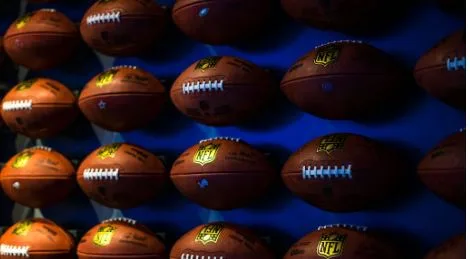A Beginner’s Guide To Understanding NFL Odds And Lines
The NFL captivates because every play shifts the probabilities on the board. Learning how odds and lines work turns casual viewing into a more informed experience. This guide adapts beginner friendly concepts from NFL picks to show how predictions, formats, and basic math connect. You will see how spreads, moneylines, totals, props, and parlays are read. The goal is simple: understand the numbers and apply them.
What Are NFL Picks And Predictions
NFL picks are forecasts on game outcomes. Some are casual, like office pools. Others support fantasy contests or structured betting markets. A pick can be as simple as naming a winner, or as nuanced as expecting a team to win by a certain margin. Looking at this week’s NFL odds helps bettors frame those expectations more realistically. Beginners benefit by learning formats first, then layering factors such as injuries, coaching, matchups, and weather. Clear, repeatable methods lead to steadier choices.
The Season Structure You Should Know
The schedule shapes decisions. The regular season runs 18 weeks with 17 games per team, then playoffs and the Super Bowl. Week 1 echoes off season changes. Week 2 adds fresh data. By Week 3, trends emerge that confirm or challenge priors.
How To Read American Odds
American odds show potential return relative to 100 dollars. A number below 100 indicates a favorite, showing the stake required to earn $100 in profit, for example, -120 means a $120 stake yields $100 if it wins. A number above 100 represents an underdog, showing the profit earned on a $100 stake; +120 means a $100 stake yields $120 if it wins. These figures reflect implied probability and indicate expected outcomes, not guarantees.
Lines Versus Spreads
A line can refer broadly to the price on a team or market. The point spread is specific. It handicaps the favorite and boosts the underdog to balance sides. If Dallas is -4, Dallas must win by more than four for a spread ticket to cover. Washington at +4 can win outright or lose by fewer than four. When the final margin matches the spread exactly, the result is a push and stakes are returned. Half point spreads avoid pushes.
Moneylines And Picking Winners
A moneyline wager is a direct call on the winner. Odds compress risk and reward. A favorite at -190 asks for a larger stake for a smaller return. An underdog at +160 needs a smaller stake while offering a larger return. For beginners, moneylines feel intuitive, especially when paired with NFL game predictions and stats that highlight team performance trends. Use them to compare perceived edge against price, not just team reputation.
Totals And Pace Of Play
Totals, or over unders, price the combined points scored by both teams. If the number is 48, an Over bet needs 49 or more. An Under needs 47 or fewer. Team tempo, red zone efficiency, and defensive style all matter. Weather and coaching philosophy can tilt outcomes, especially outdoors.
Props And Game Specific Angles
Proposition markets isolate players or events. Player props price yards or touchdowns. Game props ask about overtime or first score. These do not depend on the final winner and reward granular insight.
Parlays, Same Game Parlays, And Round Robins
A parlay combines multiple selections into one ticket, and each leg must win. Same Game Parlays build correlated ideas inside one matchup. Round robins form parlay sets from your picks to smooth all or nothing risk.
Building Weekly NFL Picks
Weekly analysis beats hunches. Start with a schedule and location. Check injuries at key positions. Study head to head tendencies for scheme edges. Track team form across three game windows to avoid overreacting.
Understanding Survivor And Pick ’Em Formats
Survivor pools ask you to pick one winning team each week, without repeating teams. The safest play is not always the best if it costs future flexibility. Map likely selections four to six weeks ahead and save elite teams for thin slates. Pick ’em contests reward consistent weekly accuracy across all games. Bank steady points by trusting matchups rather than chasing long shots.
Learning From Expert Analysis
Established analysts study film, track statistics, and apply models that weigh efficiency and pace. Following experts can speed your learning curve. Note how they justify edges, not just which side they prefer.
Bankroll And Risk Principles
Decisions feel clearer with structure. Define unit size before placing any pick. Avoid staking large portions of your balance on a single game. Be mindful of live markets, where odds update during play and settlement may occur after the game. Features such as cash out can lock value but should fit a plan.
Interpreting House Rules That Affect Settlement
Markets settle by league data. Overtime usually counts. Abandoned or postponed games are void unless played within the same week. Venue changes can void tickets. In touchdown markets, credit goes to the ball carrier or receiver in the end zone.
Beginner Friendly Flow For Any Matchup
Follow a repeatable checklist. Confirm injuries and weather. Compare recent efficiency. Evaluate the spread and moneyline prices against your projection. Decide whether the total aligns with pace and finishing rates. Consider props where a role change or matchup stands out. If building a parlay, confirm that each leg has a clear independent edge.
Common Pitfalls To Avoid
Do not chase losses with bigger stakes. Do not overreact to a single highlight. Avoid anchoring on preseason takes after clear new data arrives. Respect travel and rest. When multiple picks depend on the same assumption, manage exposure to reduce correlated risk.
A Final Word You Can Use Today
Clarity beats complexity. Start simple with moneylines and spreads, then expand to totals and props as your comfort grows. Use structured weekly analysis to guide NFL picks and to understand odds and lines with confidence.




